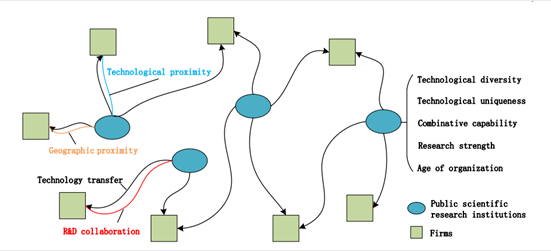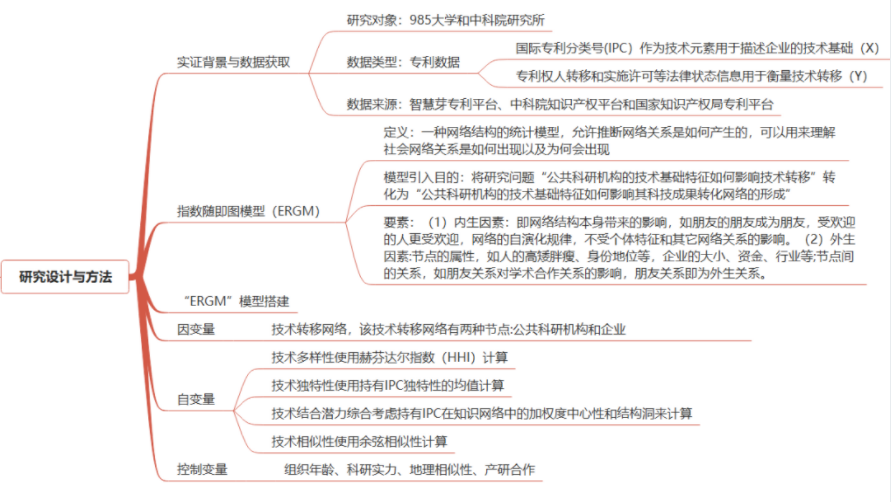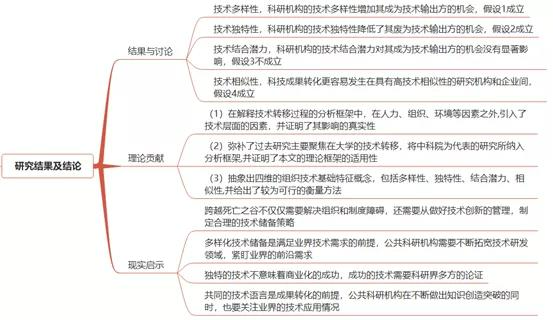On 21 October 2021, the 1st Xi Xian "Innovation Cloud Forum", co-organised by the IIDPF and the Centre for Science and Technology Strategy and Policy Research, affiliated with the Ministry of Education and the Ministry of Science and Technology, was held online as scheduled. Professor Guo Ying from the Business School of China University of Political Science and Law was the keynote speaker and delivered a lecture entitled "Crossing the 'Valley of Death': Research on Innovation Networks and Transformation of Scientific and Technological Achievements". The forum was organised by the Science and Technology Strategy and Policy Research Institute. The forum was hosted by Professor Jingjing Zeng, Director of the Center for Science and Technology Strategy and Policy, and was attended by over 150 students and teachers from the University of Florida, Hong Kong University of Science and Technology, China University of Political Science and Law, Wuhan University, Huazhong University of Science and Technology, Dalian University of Technology, and Zhongnan University of Economics and Law.
  Professor Kwok's talk is based on his article Technology Stocks: A Study on the Characteristics that Help Transfer Public Research to Industry, published in a recent issue of Research Policy. The current problem of high input, high output and low conversion in the field of science and technology innovation in China, taking 985-Project universities and CAS as an example, of the 365,058 patents granted from 2008-2017, only 19,331 were transferred to industry, a conversion rate of only 5.3%. The difficulties in the transformation of scientific and technological achievements have attracted great attention from governments at all levels and a series of policies have been introduced to encourage the transformation of scientific and technological achievements. The article systematically reviews the literature on the factors influencing technology transfer in public research institutions, outlining the influencing factors at the individual level, the institutional level and the environmental level. Through literature review, Prof. Guo believes that current research has mostly explored the influencing factors of technology transfer from the perspectives of human factors, organisational factors and environmental factors, ignoring the essence of technology transfer, i.e. "a process of technology search and technology selection", and the influence of technology itself has not been fully considered. Based on the current lack of research, the research questions in this paper are: What role does technology play? How do the characteristics of the technology base influence technology transfer in public research institutions? (Note: Public research institutions include universities and research institutes)

  This is followed by Professor Guo's discussion of the theoretical background and assumptions of the article. The core theoretical foundation of the paper is the knowledge base perspective, which states that a firm's competitiveness is derived from its knowledge base and that firms have an incentive to select and absorb new technologies from outside. Furthermore, studies related to knowledge diffusion have demonstrated that knowledge base can significantly influence knowledge diffusion activities, for example, knowledge base affects technology consulting relationships among employees within a firm (Brennecke and Rank, 2017); knowledge base affects the number of citations in papers (Guan et al., 2017); technological distance affects technology transfer between universities and firms (Martin, 2012), while technology is explicit knowledge and technology transfer is explicit knowledge diffusion.
  Based on the above theoretical foundation, this paper selects four technology base characteristics: technology diversity, technology uniqueness, technology combination potential, and technology similarity. The relationship between the four technology base characteristics and technology transfer leads to the four hypotheses of this paper.
  Hypothesis 1: The technological diversity of public research institutions increases their probability of technology transfer;
  Hypothesis 2: The technological uniqueness of public research institutions reduces their probability of technology transfer;
  Hypothesis 3: The technology combination potential of public research institutions increases their probability of technology transfer;
  Hypothesis 4: Technology transfer tends to occur between public research institutions and firms with a similar technological base.

  A further description of the article's research design and methodology was given by Professor Guo. The research subjects of this article are 985-project universities and CAS institutes. Patent data is used with the aim of using International Patent Classification (IPC) numbers as technology elements to describe the technology base of enterprises (X); and legal status information such as patent owner transfer and implementation license to measure technology transfer (Y). The data is sourced from the Smart Buds Patent Platform, the CAS Intellectual Property Platform and the State Intellectual Property Office Patent Platform.
  The main model used in this article is the Exponential Random Graph Model (ERGM), which is a statistical model of network structure that allows inferences to be made about how network relationships arise and can be used to understand how and why social network relationships emerge. The purpose of introducing this model in this study is to transform the research question "How do the technology base characteristics of public research institutions influence technology transfer" into "How do the technology base characteristics of public research institutions influence the formation of their technology transfer networks", for example "How does characteristic A affect the probability of a research institution a issuing a continuous edge in a technology transfer network", or "How do the other relationships between institutions a and b affect the occurrence of technology transfer between ab". There are two main elements in this model: (1) endogenous factors: i.e. the effects brought about by the network structure itself, such as friends of friends becoming friends, popular people becoming more popular, and the self-evolving laws of the network, independent of individual characteristics and other network relationships. (2) Exogenous factors: attributes of nodes, such as people's height, weight, status, etc., size, capital, industry, etc. of enterprises; relationships between nodes, such as the influence of friends' relationships on academic cooperation relationships, and friends' relationships are exogenous relationships. In addition, the thesis discusses in detail the process of building the "ERGM" model.

  The dependent variable of the article is the technology transfer network, which has two types of nodes: public research institutions and firms. The independent variables are calculated based on the co-occurrence of institutions and IPCs, technology diversity using the Herfindahl Index (HHI), technology uniqueness using the mean of the uniqueness of the IPCs held, technology combination potential taking into account the weighted centrality and structural holes of the IPCs held in the knowledge network, and technology similarity using the cosine similarity. Control variables include organisational age, research strength, geographical similarity, and industry-research collaboration.

  In conclusion, Professor Guo discusses the findings and conclusions of the article. Regarding technological diversity, the technological diversity of research institutions increases their chances of becoming technology exporters, hypothesis 1 holds; regarding technological uniqueness, the technological uniqueness of research institutions decreases their chances of becoming technology exporters, hypothesis 2 holds; regarding technological combination potential, the technological combination potential of research institutions has no significant effect on their chances of becoming technology exporters, hypothesis 3 does not hold; regarding technological similarity Hypothesis 4 holds true, as the transformation of technological achievements is more likely to occur between research institutions and enterprises with high technological similarity. Professor Guo also provided further discussion on the empirical results of each research hypothesis.
  The contributions of this paper are mainly reflected in the following three points: (1) In the analytical framework to explain the technology transfer process, the technology dimension is introduced in addition to human, organisational and environmental factors, and the authenticity of its impact is demonstrated. (2) Compensating for the fact that past studies have mainly focused on technology transfer in universities, the research institutes represented by the Chinese Academy of Sciences are included in the analytical framework, and the applicability of the theoretical framework of this paper is demonstrated. (3) A four-dimensional concept of organisational technology base characteristics is abstracted, including diversity, uniqueness, combination potential and similarity, and a more feasible measurement method is given.
  In addition, Professor Guo also spoke about some of the implications of this paper for reality.

  Professor Guo also shared with the participants his experience of doing research, as well as some reflections and insights in the process of writing his thesis. Firstly, one should "plough deep and work hard", and pay attention to accumulation, precipitation and transmission in the usual way. Secondly, it is important to "work on small topics", with small cuts and big efforts. Thirdly, think differently and put yourself in the shoes of the reviewer or reviewer. Fourth, it is necessary to "integrate innovation", such as the choice of periodicals and the transformation of methods. Fifthly, we must "move forward", not abandoning or giving up.

  The lecture concluded with an active discussion between students and faculty on the mining of patent data, the use of ERGM models, the condensation of research questions and relevant policy recommendations.
